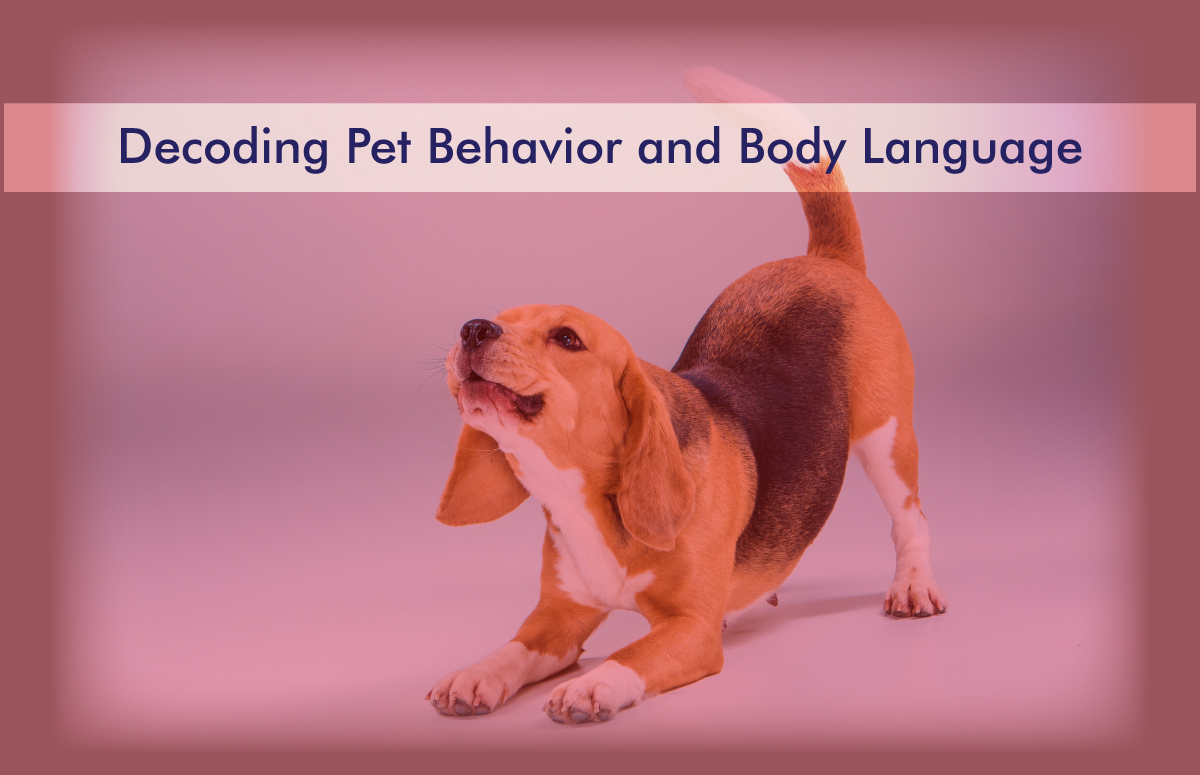Decoding Pet Behavior and Body Language
Table of Contents
- Introduction
- 1. The Importance of Decoding Pet Behavior
- 2. Understanding Pet Body Language
- 3. Interpreting Facial Expressions and Tail Movements
- 4. Vocalizations and Their Meanings
- 5. Behavioral Patterns and Their Significance
- 6. Addressing Common Behavior Issues
- 7. Creating a Positive
- 8. Seeking Professional Help: Pet Behavior Specialists
- 9. Tips for Better Communication with Your Pet
- FAQ
- Conclusion
Introduction
Understanding our furry companions can sometimes feel like deciphering a complex puzzle. As pet owners, we strive to provide the best care and ensure our pets’ happiness and well-being. One crucial aspect of this is understanding their behavior and body language. By decoding the subtle cues and signals they communicate, we can build stronger bonds and address their needs effectively. This blog post will explore the fascinating world of pet behavior and body language, exploring key insights, tips, and strategies to help us become better pet parents.
1. The Importance of Decoding Pet Behavior
Understanding our pets’ behaviour is crucial for their well-being and our relationship. By deciphering their body language, we can recognize when they are happy, scared, anxious, or in pain. This knowledge helps us promptly address their needs, reducing stress and ensuring comfort.
2. Understanding Pet Body Language
Dogs, cats, and other common pets have distinct ways of expressing themselves. Pets communicate primarily through body language. Interpreting their signals can deepen our understanding of their emotions and intentions.
a. Dog Body Language
Dogs use a combination of body posture, facial expressions, and tail movements to convey their feelings. For example, a wagging tail doesn’t always mean happiness. Depending on position and speed, it can indicate excitement, fear, or even aggression.

b. Cat Body Language
Cats have many body language signals, including ear position, tail movements, and vocalizations. Understanding their subtle cues, such as flattened ears or a flicking tail, can help us gauge their mood and respond appropriately.

c. Other Common Pets’ Body Language
Rabbits, birds, and other pets also have their unique ways of communicating. Learning their specific body language cues can enhance our understanding and strengthen our bond with them.
3. Interpreting Facial Expressions and Tail Movements
A pet’s face can reveal a lot about their emotions. Happy eyes, relaxed ears, and a soft mouth indicate contentment. In contrast, narrowed eyes, flattened ears, or bared teeth may signal aggression or discomfort. Similarly, whether wagging, raised, or tucked, tail movements can provide valuable insights into their state of mind.
4. Vocalizations and Their Meanings
Pets use vocalizations to communicate their needs and emotions. Understanding the different sounds they make, such as barks, meows, chirps, or purrs, can help us respond appropriately. For example, a prolonged, high-pitched bark in a dog might indicate excitement, while a low growl could signal a warning.
5. Behavioral Patterns and Their Significance
Pets exhibit behaviour patterns that can reveal important information about their needs and well-being. These patterns include eating habits, play behaviours, grooming rituals, and more. Recognizing deviations from their usual patterns can alert us to potential health issues or emotional distress.
6. Addressing Common Behavior Issues
Many pets experience behaviour issues at some point. These can range from separation anxiety and aggression to excessive barking or destructive behaviour. Understanding the underlying causes and employing positive training techniques can help address these issues and foster a harmonious relationship.
7. Creating a Positive
Environment for Your Pet
A nurturing environment plays a vital role in shaping a pet’s behavior. Providing a safe, stimulating, and enriching space promotes their well-being and encourages positive behaviour. Proper nutrition, regular exercise, and mental stimulation contribute to a happy and balanced pet.
8. Seeking Professional Help: Pet Behavior Specialists
In some cases, professional help from a pet behaviour specialist or trainer may be necessary. These experts can assess your pet’s behaviour, provide guidance, and develop customized training plans to address specific concerns. Their expertise and experience can be invaluable in resolving complex behavior issues.
9. Tips for Better Communication with Your Pet
Improving communication with our pets involves active listening, observing their body language, and responding appropriately. Building a strong bond requires patience, consistency, and positive reinforcement. Establishing trust and mutual understanding forms the foundation of a rewarding relationship.
FAQ
Sure! Here are the 10 most frequently asked questions (FAQs) related to decoding pet behavior and body language, along with their answers:
How can I tell if my dog is anxious or stressed?
Dogs exhibit various signs of anxiety or stress, such as panting, pacing, drooling, trembling, or avoiding eye contact. They may also show behaviours like excessive barking, destructive chewing, or attempting to escape.
What does it mean when a cat’s tail is puffed up?
A puffed-up tail in cats typically indicates fear, agitation, or feeling threatened. It’s their way of trying to appear larger and more intimidating to potential threats.
Why does my pet make different vocalizations, and what do they mean?
Pets vocalize to communicate their needs and emotions. Dogs have various barks, whines, and howls, while cats have different meows and purrs. Each vocalization can convey specific messages, such as seeking attention, expressing happiness, or indicating discomfort.
How can I address my pet’s aggressive behaviour?
Aggression in pets requires careful handling. Identifying the underlying causes, such as fear or territoriality, is essential as working with a professional trainer or behaviourist to develop a behaviour modification plan. Positive reinforcement techniques can help redirect aggression into more desirable behaviours.
Is it possible to train a pet to stop certain unwanted behaviours?
Training can effectively address unwanted behaviours in pets. Positive reinforcement techniques like reward-based training help redirect and shape their behaviour. Consistency, patience, and clear communication are essential to successful training.

How can I create a positive environment for my pet?
Creating a positive environment involves providing your pet with a safe, comfortable space. This includes ensuring proper nutrition, regular exercise, mental stimulation, and social interaction. Establishing routines, providing enrichment toys, and offering love and attention is crucial.
When should I seek professional help for my pet’s behaviour issues?
It’s advisable to consult a pet behaviour specialist or trainer if you’re experiencing significant challenges with your pet’s behaviour. Aggression, separation anxiety, or persistent destructive behaviour may require professional guidance to address effectively.
Can I use punishment to correct my pet’s behaviour?
Punishment is not recommended as a primary training method for correcting pet behaviour. Positive reinforcement techniques, such as rewarding desired behaviours, are more effective and build a stronger bond between you and your pet.
How can I improve communication with my pet?
Improving communication involves actively observing your pet’s body language, listening to their vocalizations, and responding appropriately. Building trust and using positive reinforcement techniques to reinforce desired behaviours can enhance communication and strengthen your relationship.
Are there specific body language cues I should know in rabbits, birds, or other pets?
Yes, each pet species has its own unique body language cues. For example, rabbits may thump their hind legs when startled, while birds may display feather ruffling or beak grinding as signs of comfort. Researching and understanding the body language of specific pet species can help you better interpret their behaviour.
By addressing these frequently asked questions, pet owners can gain valuable insights into understanding and decoding their pet’s behavior and body language.
Read More: Pet Insurance in India: Is It Worth It?
Conclusion
Decoding pet behavior and body language is an ongoing process deepening our connection with furry friends. By noticing their subtle cues and signals, we can better appreciate their needs, emotions, and desires. This understanding enables us to provide the care, love, and support they deserve. Remember, each pet is unique, and patience, empathy, and a willingness to learn are crucial to becoming a knowledgeable and compassionate pet owner.







